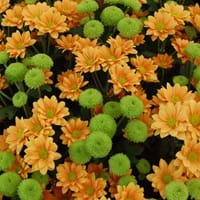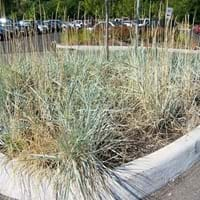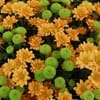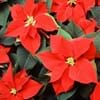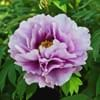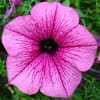Life Span
Perennial
Perennial
Origin
Asia, Northeastern Europe
Europe, Northern Europe, Western Europe, Asia, Central Asia, Western Asia
Types
Garden mum, Tricolor chrysanthemum, Indian chrysanthemum, Corn marigold
Blue Lyme Grass
Number of Varieties
Not Available
Habitat
By seashore, Grassland, Thickets
Clay soil areas, Loamy soils, Sandy areas, sandy seeps, Well Drained
USDA Hardiness Zone
3-9
4-10
Sunset Zone
1a, 1b, 2a, 2b, 3a, 3b, 4, 5, 6, 7, 8, 9, 10, 11, 12, 13, 14, 15, 16, 17, 18, 19, 20, 21, 22, 23, 24
A2, A3, 1a, 1b, 2a, 2b, 3a, 3b, 4, 5, 6, 7, 8, 9, 14, 15, 16, 17, 18, 19, 20, 21, 22, 23, 24
Habit
Clump-Forming
Spreading
Flower Color
Burgandy, Green, Lavender, Orange, Pink, Purple, Red, Salmon, White, Yellow
Creamy Yellow
Flower Color Modifier
Bicolor
Bicolor
Fruit Color
Brown, Not Available
Not Available
Leaf Color in Spring
Dark Green
Blue Green, Steel Blue
Leaf Color in Summer
Green, Sea Green
Light Green
Leaf Color in Fall
Green, Sea Green
Light Yellow, Pink, Steel Blue
Leaf Color in Winter
Not Available
Tan
Leaf Shape
Ovate
Grass like
Plant Season
Fall, Summer
Summer, Fall
Sunlight
Full Sun
Full Sun, Partial Sun
Type of Soil
Well drained
Clay, Loam, Sand
The pH of Soil
Neutral, Slightly Acidic
Acidic, Neutral, Alkaline
Soil Drainage
Well drained
Well drained
Bloom Time
Early Fall, Fall, Late Fall, Late Summer
Summer, Late Summer
Tolerances
Not Available
Pollution, Drought, Salt
Where to Plant?
Ground
Container, Ground, Pot
How to Plant?
Grafting, Seedlings, Transplanting
Root Division, Rooted stem cutting, Seedlings
Plant Maintenance
Medium
Medium
Watering Requirements
Form a Soil ring to water efficiently, Over-watering can cause leaf problems or root diseases, Prefer drip-irrigation instead of Over-head watering, Requires regular watering, Use Mulches to help prevent water loss during hot and windy weather
Average Water Needs, occasional watering once established
In Summer
Lots of watering
Lots of watering
In Spring
Moderate
Moderate
In Winter
Average Water
Average Water
Soil pH
Neutral, Slightly Acidic
Acidic, Neutral, Alkaline
Soil Type
Well drained
Clay, Loam, Sand
Soil Drainage Capacity
Well drained
Well drained
Sun Exposure
Full Sun
Full Sun, Partial Sun
Pruning
Cut or pinch the stems, Prune for shortening long shoots, Prune if you want to improve plant shape, Prune in summer, Prune to control growth, Remove shoots
No pruning needed in the early stages, Prune grass to maintain level, Remove damaged leaves, Remove dead branches, Remove dead leaves
Fertilizers
All-Purpose Liquid Fertilizer
All-Purpose Liquid Fertilizer, fertilize in spring
Pests and Diseases
Aphids, Botrytis head rot, Caterpillars, Cutworms, Powdery mildew, Rhizoctonia stem rot, Slugs, Spider mites, Thripes
Red blotch
Plant Tolerance
Drought
Drought, Pollution, Salt
Flowers
Yes
Insignificant
Flower Petal Number
Single
Single
Foliage Texture
Medium
Coarse
Foliage Sheen
Matte
Matte
Attracts
Butterflies
Butterflies
Allergy
Asthma, Eczema, Hay fever, Inflammation to sinuses or hives, Skin rash
Pollen
Aesthetic Uses
Beautification, Bouquets, Showy Purposes
Ground Cover, Landscape Designing
Beauty Benefits
Not Available
Not Available
Edible Uses
Yes
Insignificant
Environmental Uses
Air purification
Air purification, soil erosion prevension on hill slopes, soil stabilisation
Medicinal Uses
Chest pain, Diabetes, Headache, High blood pressure, Swelling
Not Available
Part of Plant Used
Leaves
Stem
Other Uses
Employed in herbal medicine, Used as Ornamental plant
Used as Ornamental plant
Used As Indoor Plant
No
No
Used As Outdoor Plant
Yes
Yes
Garden Design
Not Available
Mixed Border
Botanical Name
Chrysanthemums
LEYMUS arenarius 'Blue Dune'
Common Name
Chrysanths
Blue Dune Lyme Grass, Sand Ryegrass
In Hindi
Chrysanthemums
Blue Dune Lyme Grass
In German
Chrysanthemen
Blau Dune Lyme Grass
In French
Chrysanthèmes
Bleu Dune Lyme Herbe
In Spanish
Crisantemos
Azul Duna hierba de Lyme
In Greek
χρυσάνθεμα
Μπλε Dune Lyme Grass
In Portuguese
Crisântemos
Azul Dune Lyme grama
In Polish
Chryzantemy
Niebieska Trawa Dune z Lyme
In Latin
Chrysanthemums
Blue Dune Lyme Grass
Phylum
Magnoliophyta
Magnoliophyta
Class
Magnoliopsida
Liliopsida
Order
Asterales
Cyperales
Family
Asteraceae
Poaceae
Genus
Chrysanthemum
Elymus
Clade
Not Available
Angiosperms, Commelinids, Monocots
Tribe
Anthemideae
Triticeae
Subfamily
Not Available
Pooideae
Number of Species
Not Available
Importance of Chrysanthemum and Blue Dune Lyme Grass
Want to have the most appropriate plant for your garden? You might want to know the importance of Chrysanthemum and Blue Dune Lyme Grass. Basically, these two plants vary in many aspects. Compare Chrysanthemum and Blue Dune Lyme Grass as they differ in many characteristics such as their life, care, benefits, facts, etc. Every gardener must at least have the slightest clue about the plants he wants to plant in his garden. Compare their benefits, which differ in many ways like facts and uses. The medicinal use of Chrysanthemum is Chest pain, Diabetes, Headache, High blood pressure and Swelling whereas of Blue Dune Lyme Grass is Not Available. Chrysanthemum has beauty benefits as follows: Not Available while Blue Dune Lyme Grass has beauty benefits as follows: Not Available.
Compare Facts of Chrysanthemum vs Blue Dune Lyme Grass
How to choose the best garden plant for your garden depending upon its facts? Here garden plant comparison will help you to solve this query. Compare the facts of Chrysanthemum vs Blue Dune Lyme Grass and know which one to choose. As garden plants have benefits and other uses, allergy is also a major drawback of plants for some people. Allergic reactions of Chrysanthemum are Asthma, Eczema, Hay fever, Inflammation to sinuses or hives and Skin rash whereas of Blue Dune Lyme Grass have Pollen respectively. Having a fruit bearing plant in your garden can be a plus point of your garden. Chrysanthemum has no showy fruits and Blue Dune Lyme Grass has no showy fruits. Also Chrysanthemum is flowering and Blue Dune Lyme Grass is not flowering . You can compare Chrysanthemum and Blue Dune Lyme Grass facts and facts of other plants too.
